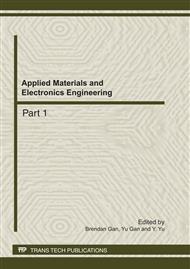p.237
p.241
p.247
p.251
p.256
p.262
p.266
p.270
p.274
Numerical Simulation for Dynamic Response of EPS Geofoam Seismic Buffers
Abstract:
Numerical simulation for dynamic response of EPS geofoam seismic buffers placed behind the rigid retaining walls was carried out with the Fast Lagrangian Analysis for Continuum method (FLAC) .The considerations of setting boundary condition of the numerical model, inputting and correcting the dynamic time series of seismic acceleration, and selecting the proper damping were discussed. The coincidence relations of compression-time for EPS geofoam buffers and the horizontal soil pressure -time for retaining wall were numerically calculated by using the proposed model. The calculating results were compared with the physical testing results. The comparisons showed that there were good agreements between the numerical data and the measured data. The numerical results indicate that EPS panels placed between the rigid retaining wall and the backfill soil have a good effect on reducing horizontal earth force during shaking acceleration and can act as seismic buffers against earthquake. The FLAC model provides a feasible way to analyze the dynamic response of EPS geofoam seismic buffers for further researches.
Info:
Periodical:
Pages:
256-261
Citation:
Online since:
October 2011
Authors:
Price:
Сopyright:
© 2012 Trans Tech Publications Ltd. All Rights Reserved
Share:
Citation:


